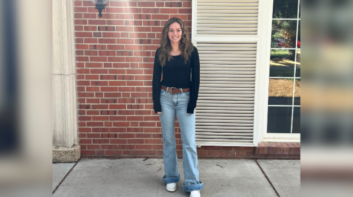By: Caroline Downey and Amie Ichikawa
Disclaimer: This report includes graphic content that may be considered disturbing to some readers. Reader discretion is advised.
Thanks to several laws enshrining gender ideology throughout the Golden State, California has been financially coddling transgender-identifying male felons who are housed in the state’s women’s prisons while neglecting the safety and health needs of female inmates.
Since the state’s radical prison gender inclusion housing policy was enacted in 2021, it has cost taxpayers millions in medical expenses and other accommodations for trans-identifying male criminals, some of whom take advantage of the lenient law to prey upon female inmates.
The state’s 2021-22 budget appropriated $2.8 million one-time and $1.2 million in ongoing costs to implement California Senate Bill 132 (SB132), a law that allows incarcerated trans-identifying men to be housed with women. Since then, the California Department of Corrections and Rehabilitation (CDCR) has dumped taxpayer dollars on transition treatments for trans-identifying male prisoners, some of whom have horrific criminal histories.
From about fiscal year 2016 to 2023, California Correctional Health Care Services spent over $4 million on approximately 117 male inmates’ gender transition procedures, including 35 vaginoplasties, 69 laser hair removals, two facial feminization surgeries, and 11 breast implant procedures, according to records reviewed by IW Features. However, the total cost is likely significantly higher, as the estimate does not include what was spent on transportation, hospitalization, long-term care, or additional post-op fees.

Just one sample of male offenders obtained by IWFeatures reveals that among the trans-identifying males who have transferred to women’s prisons under SB132 are murderers, a rapist, and a kidnapper. Other male felons on the list include a child predator, one who committed lewd and lascivious conduct against a child under 14 years old, one who engaged in continuous sex abuse of a child under 14 years old, and another criminal who was convicted of adult oral copulation of a child 10 years old or younger. These individuals are entitled to receive “gender-affirming” procedures, subsidized by California taxpayers.

The state is showering trans-identifying men with benefits while it’s still barely compensating survivors of the forced sterilizations that were performed on female inmates in state-run facilities past the 1970s.
California’s prison system is also still struggling to improve an alleged drinking water toxicity problem. In 2019, a prison hospital in Stockton, California, reported an inmate death that was tied to the waterborne Legionnaires’ bacteria. In 2015, 13 inmates and three staff members contracted Legionnaires’ disease at San Quentin State Prison. Since 1993, state regulators have cited prisons at least 199 times for violating drinking water standards, according to a review of State Water Resources Control Board records by the Sacramento Bee. Some state prisons have been cited for water contamination by arsenic.
Contaminants allegedly detected at the Central California Women’s Facility (CCWF), a women’s prison in the state, include high levels of arsenic, Bromodichloromethane, and Haloacetic acids (HAA5), among other toxic chemicals that pose a serious cancer risk, according to the EWG Tap Water Database.

But while more investment is needed in California prisons’ water supply, CDCR is busy providing free condoms to trans-identifying males in women’s prisons. As required by California state law, CDCR makes condoms available in all state prisons, including those designated for women.
Rather than acknowledge that these are men who should be separated from the women, CDCR is incentivizing male felons to game the gender housing policy to gain access to vulnerable female inmates with whom they can engage in prohibited sexual conduct. Providing these condoms, paid for by the California taxpayer, is, of course, also a tacit admission that these transgender transfers are men who could engage in penetrative sex with female inmates.
The result in California’s women’s prisons have been alleged rapes and pregnancies, according to an employee at CCWF who chose to remain anonymous out of fear of retribution. While in the investigations unit, the employee dealt with two potential pregnancies, though both cases were later dismissed. However, a convicted male rapist and, at the time, a resident of CCWF, Tremaine Carroll, allegedly impregnated a female inmate, the employee claimed. Shortly after, Carroll was accused of raping two other women.
“I believe he knew his days were numbered there, so that’s why he ended up committing two rapes that we know about,” the employee said.
After the first female alleged victim came forward, a hospital found her DNA on Carroll and his DNA in her body, the employee said.
While the employee was supervising the prison yard one day, a second female victim approached the employee upon the urging of mental health staff and alleged she had been raped. The assault had made her suicidal, according to the prison’s mental health staff.
“In addition to her DNA being on him, there’s another female’s DNA on him,” the employee said of the forensic evidence-gathering surrounding Carroll’s case. “So when I’m doing the investigation into the second victim, and I finally find camera footage, it’s the day that we took him out for the first examination, as we heard about it, and the day we put him in cuffs and took him away, it was that morning.”
When SB132 was imposed in 2021, the employee said staff at CCWF anticipated there’d be a hefty fiscal burden, as well as a blow to personnel capacity and morale. As part of a task force formed in response to SB132, the employee and other officers warned the state that there’d be potential pregnancies that would require maternity care and more resources.
“Basically what we got back was, ‘These are women, and women have been having sex with women since that prison opened,’” the employee said.

Earlier this year, CCWF earned high marks for “prenatal care,” according to a report by California’s Office of the Inspector General — yet another admission that female inmates could be getting pregnant at the facility.
In 2021, the first year after SB132 was enacted, about 20 trans-identifying males were transferred into CCWF, the employee said. Security levels at women’s prisons in California are very different from the men’s prisons, which means the male transfers could be a significantly more violent and resource-consuming bunch to police than the female residents. CCWF houses level 4 women, which is considered the equivalent of a level 2 men’s prison.
Because of its lower security requirements, CCWF doesn’t have gun coverage on the prison yards and has certain materials such as porcelain, tiles, and signage that are not allowed at high-security men’s prisons because of the risk that the inmates could manipulate them into weapons. Yet, the state sent CCWF level 3 and 4 men in the first batch of trans-identifying offenders after SB132 was implemented, the employee said.
CCWF staff made an official complaint to the CDCR, telling the agency, “If you’re forcing this on us, we need additional staffing to properly adjust to these individuals,” the employee said. “These are individuals, regardless of how they identify, that were sentenced to level 4 at a men’s institution, which requires a higher level of security.”
The employee added, “We never heard anything back.”










